I can not, will not spend the rest of my career decrying each hypercar. Promise: unlike the latest from Mercedes-AMG, this article is a one-off.
See, I am only troubled by a quote.
As reported by Autocar1, when speaking to media, current Chairman of the Management Board of Mercedes-Benz Group Ola Källenius suggested—even if it had been a light-hearted figure of speech—that his board of directors were anything but sober when approving development of the Mercedes-AMG (Project) ONE in 2017.
Then, various media outlets link in bio’d it and commenters went ape: the notion such an extreme road car was an anomaly from the automaker. Its technological brilliance was more purely racetrack-distilled than other hypercars available today. That to stuff an entire F1 engine’s worth of hot air inside a thick & sliced carbon fibre wiener wouldn’t be enough to catfish 275 buyers, even at €2.275 million apiece.
You must be drunk. It’s new, but nothing new.
Mercedes-Etcetera has been pioneering road and racing technology since 1886 when it crank-started earth into the Machine Age, leading to the current Age of Oil.
Collaborating with the Nazi regime only accelerated its lead in road and race car development through the ’30s and ’40s, until its official withdrawal from the top of motorsport on October 24, 1955.2
That June, a 300 SLR, equipped with a mechanical airbrake, hand-crafted in exotic magnesium-rich Elektron bodywork, and loaded with hand-blended racing fuel mowed down nearly 200 spectators at the 24 Hours of Le Mans. Killing more than 80 souls, including its pilot, the car had launched itself airborne off the back of a much slower racer. Stirling Moss, in a sister car, was called in to retire.
Mercedes has a sense of efficiency about it to this day—the massacre is condensed to just three sentences3 on its .com but takes care to remind us who had been winning at the time of the crash on lap 35:
“Disaster followed these triumphs, in June, in Le Mans, where three 300 SLR started: Pierre Levegh's racing sports car was involved in a collision owing to a risky manoeuvre by another car; his 300 SLR was hurled into the stands; the disaster claimed 82 lives and injured 91 persons. Under the impression of this horrible accident, Daimler-Benz decided to withdraw Moss, who was in the lead, from the race. The tragic accident overshadowed the rest of the season.”
As far as motorsport is concerned, the 1955 24 Hours of Le Mans event still leads in death count. But the wake from this Silver Arrow changed everything, everywhere, all at once.
Notably, the loss of life and spotlight it shone on track conditions, crowd control, and other areas caused immediate (but temporary) motorsport bans in several countries and was the catalyst in the founding of the United States Automobile Club, a sanctioning body to this day.
If only the leaders had noticed: Mercedes’ official withdrawal from racing began months later, after it had won the 1955 World Sportscar Championship4.
While it wasn’t back racing5 until 1988, Mercedes-Benz still continued to semi-seriously stir the pot in a dizzying variety of flavours over the years—the famous AMG-built Rote Sau “Red Pig” Mercedes-Benz 300SEL 6.3 V8, Mercedes-Benz-Ilmor F1-V10 engines, Sauber sports racing cars; the C111, CW311 and C112 projects…
Arguably, few companies past or present have sipped more speed-laced punch than Mercedes-Etc has. Its entire corporate identity is aimed using a three-pointed crosshair to performance: Das Beste oder Nichts: The Best Or Nothing. We are #1. You are not—get the fuck back in line.
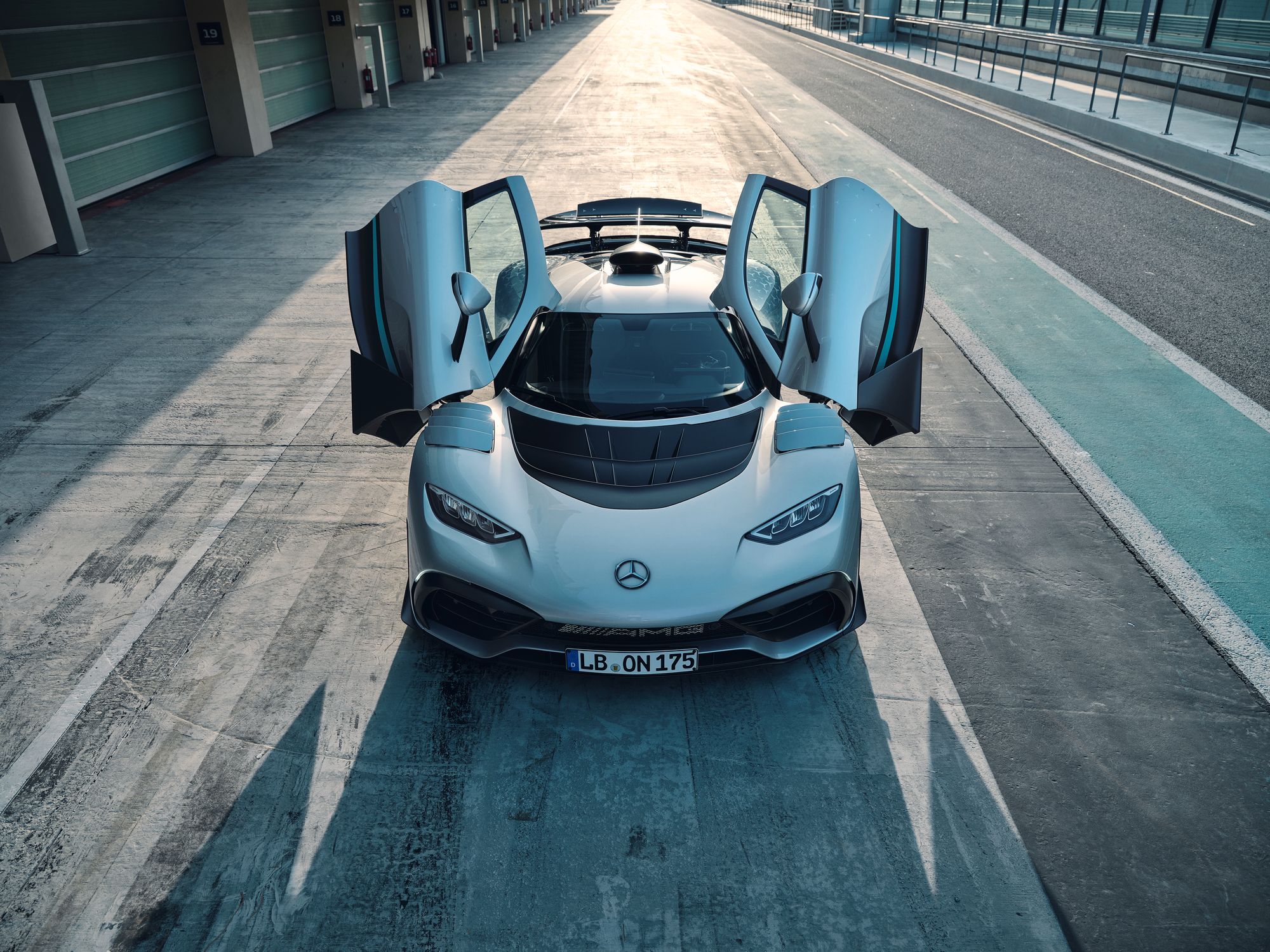
For a long time, I couldn’t point to what gnaws at me about this particular corporation.
I now think it’s due to an internalized intent; the top-down, decades-long mobilization of a sacred belief in internal combustion.
Dear lord provided the air of creation to spark Karl Benz and Gottlieb Daimler’s intellect, fueling the modern age. Something like that.
Even the Mercedes Museum still chronologically descends from the first can’t-miss-it 8th level display of a dopey but lifelike horse6 as if to say: everything gets better, more familiar, modern, and faster once we start our engines and leave the natural world behind.
The reality we gathered for here today: groundbreaking vehicles are always impressive, and sometimes do end up sucking the automotive industry forward in their draft…at no regard to monetary or societal cost.
“To use the amazing capabilities of the [car] on narrow, winding and crowded European roads, you must be in good physical shape with quick reactions and good eyesight.
“You also need a certain amount of physical endurance: the noise (and in summer, the heat), the continuous concentration, and the unending acceleration, braking, and gear shifting (for this is a car on which one never seems to be traveling at a steady speed) all add up to a fair amount of effort.”
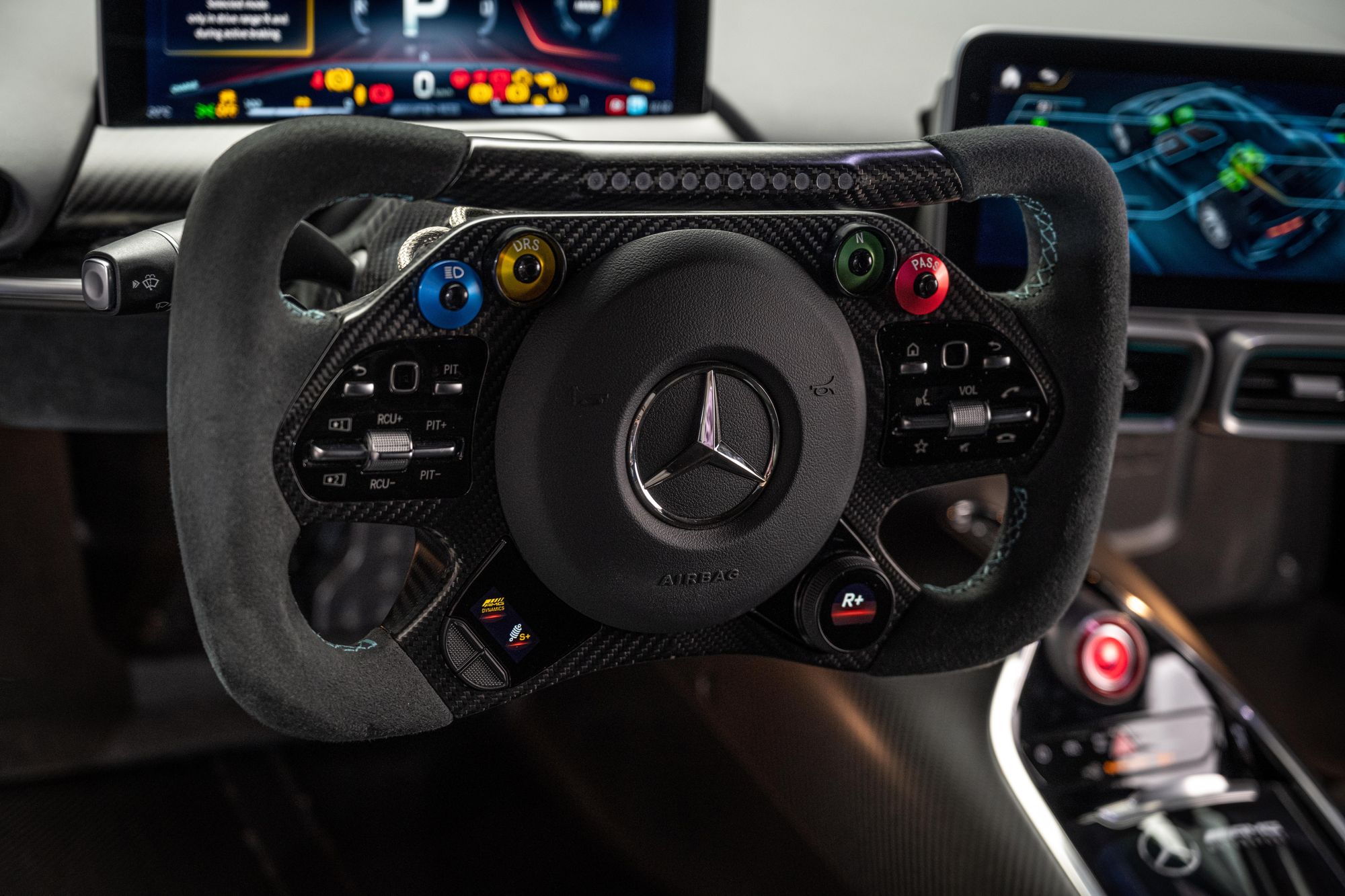
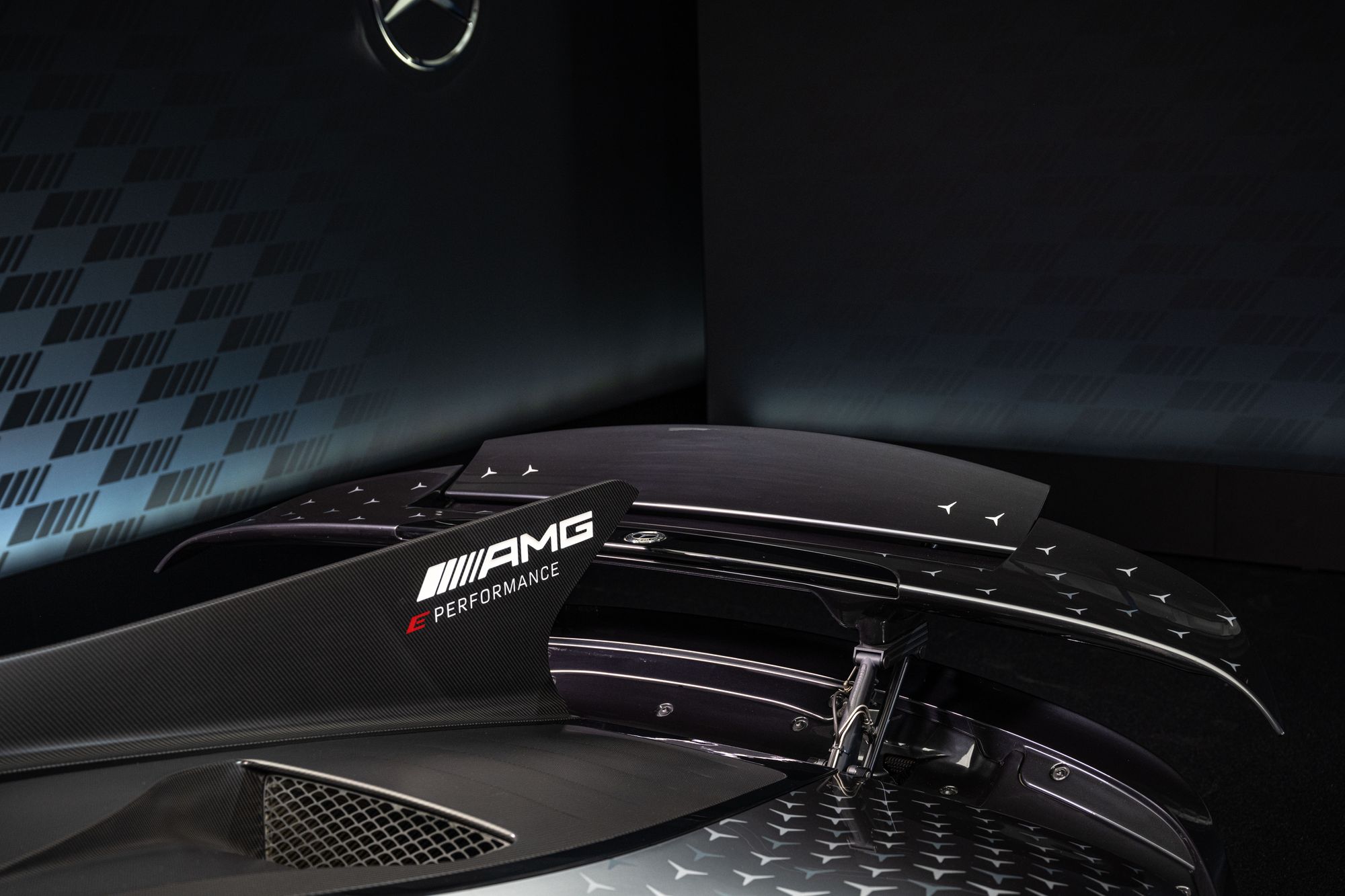
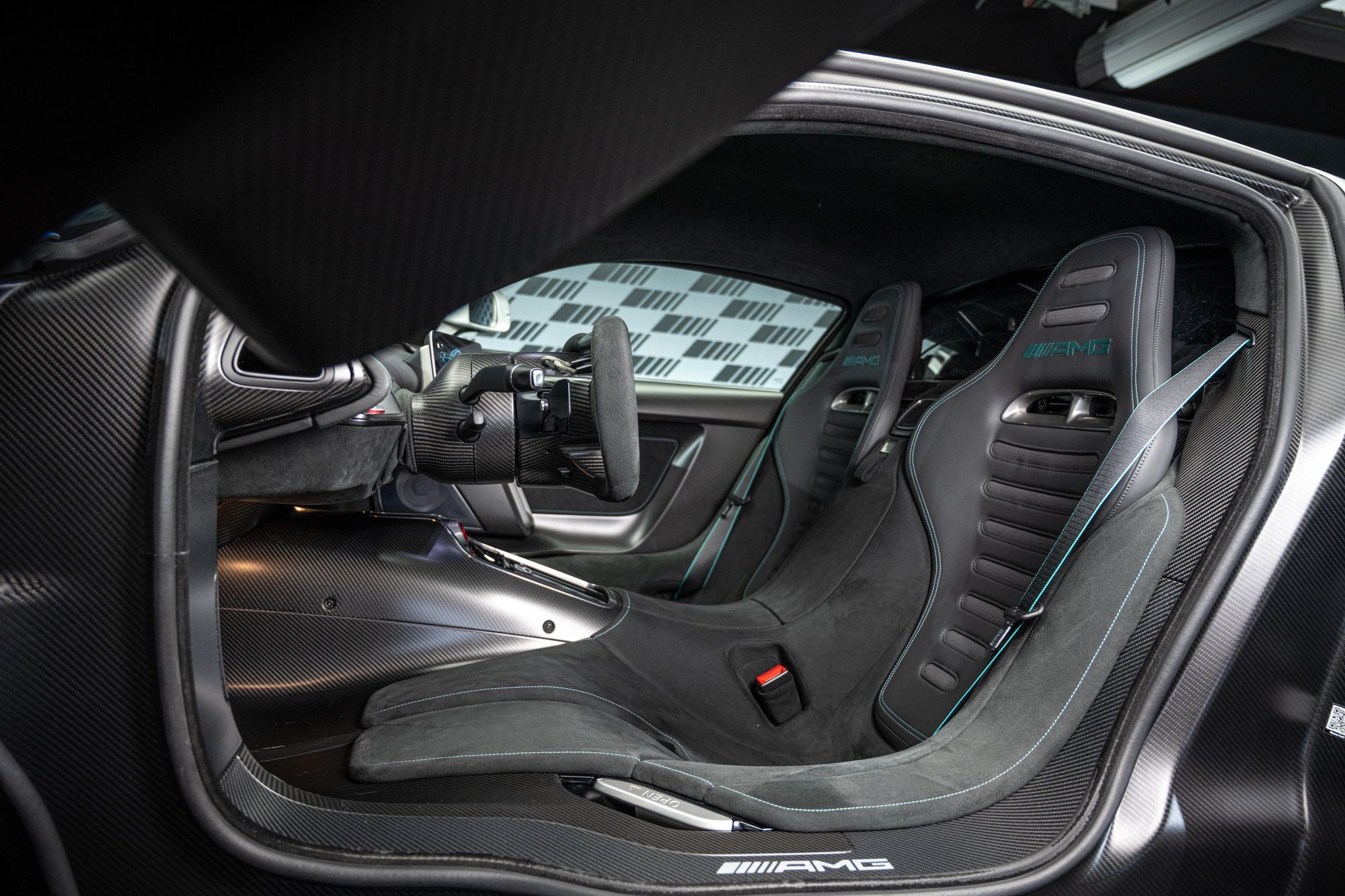
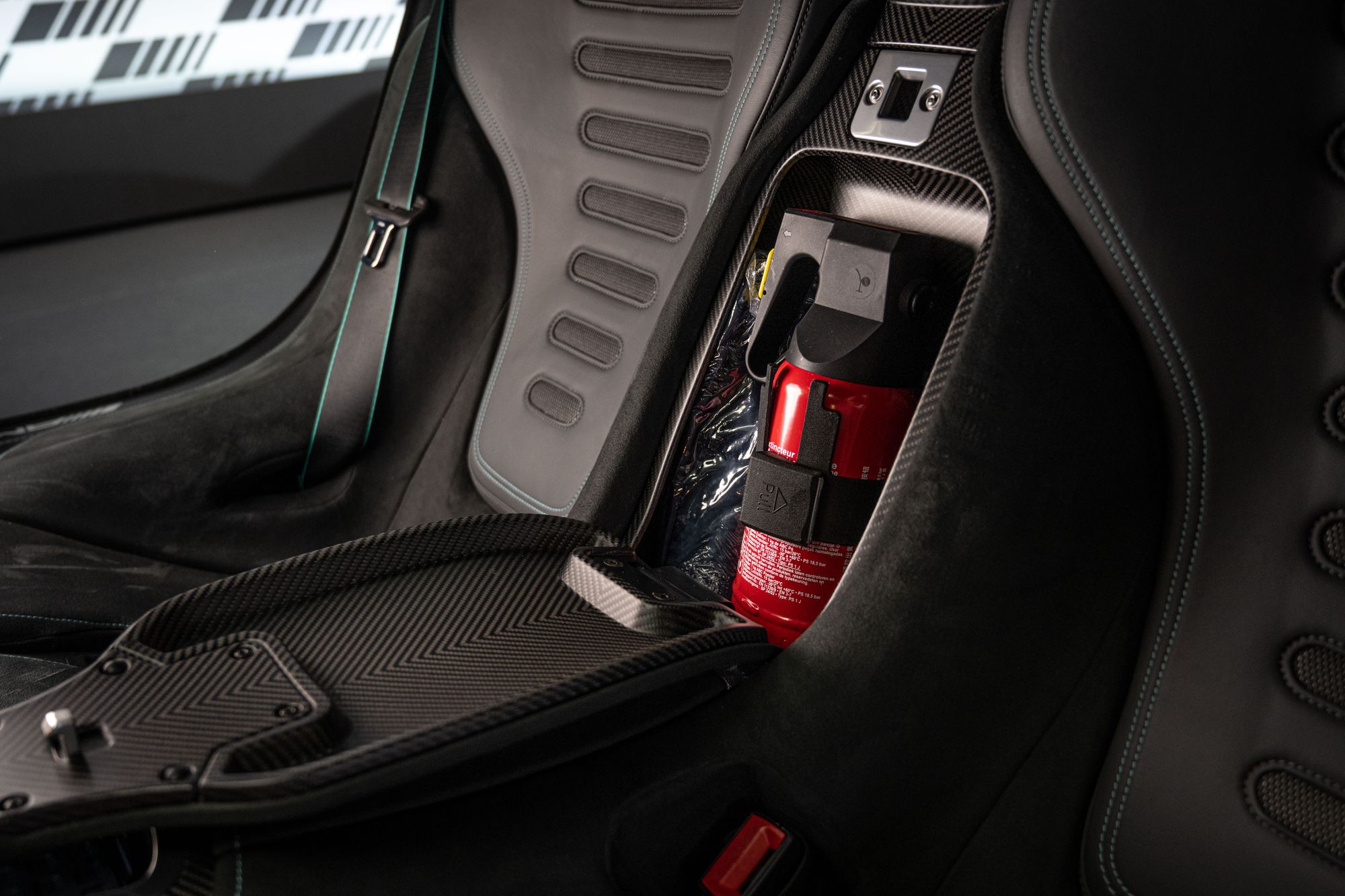
Mercedes-AMG ONE details :: source • Mercedes-Benz
Now and into the future, the 2023 Mercedes-AMG ONE is a factually fierce product, even in areas enthusiasts pick apart as downsides.
Say, its maintenance needs.
At this level of performance, you need better context: the 1,049 bhp car’s 50,000 km engine rebuild schedule is poor by road-going standards—but it’s also roughly 7,142 tours of Circuit de Spa-Francorchamps at 7 km per lap. 50,000 km is a modern 24 Hours of Le Mans race-winning distance, 9 times over.
See? The engine rebuild is hardly a concern. Worry about tires, brakes, fluids, transportation, storage—ultimate road cars always and forever need the red carpet treatment.
Credit where it’s due. It takes a ruthless, relentless, alpha Wolff level of teetotaling focus to lead an automotive powerhouse capable of creating a ONE. PowerPoint. rFpro. Quarterly reports. Sector times. EBITDA. CFD. MGU-K. Red flag restarts. Regulations. Shareholder approvals. Race wins.
Success, managed to the thousandth of a second since 1889.
Funny: the most valuable vehicle ever sold was an unauthorized prototype from a bygone age, created without the Mercedes boardroom’s blessing.

The year? 1955, again. You know it as the 300 SLR “Uhlenhaut Coupé”.
Basically, British-German immigrant Rudolf Uhlenhaut pilfered his employer’s quiver of Silver Arrows parts to build himself a rod capable of hot doggin’ it daily on the Autobahn7.
Two were eventually crafted in the race shop by a largely blue collar team of Mercedes-Benz mechanics, remaining literally priceless for 67 years because neither had been offered for sale.
At a corporation, what begins off the books is often best left there.
That was until one of them hammered in a private auction on May 5, 2022 for €135 million8. Together, these 300 SLR hot rods are valued at “won’t see them in the same room ever again” + VAT.
For what it’s worth, Uhlenhaut—a father of legend who remains a hero at Mercedes-Benz—never bothered to buy a car for himself9.
To bosses in the ’50s, these good ol’ boys had merely eaten up the scraps. Now, both servings are valued as having the best ingredients from a historic time, prepared by a decorated garage chief and served up to lucky drivers as an intoxicating 180 mph ratatouille.
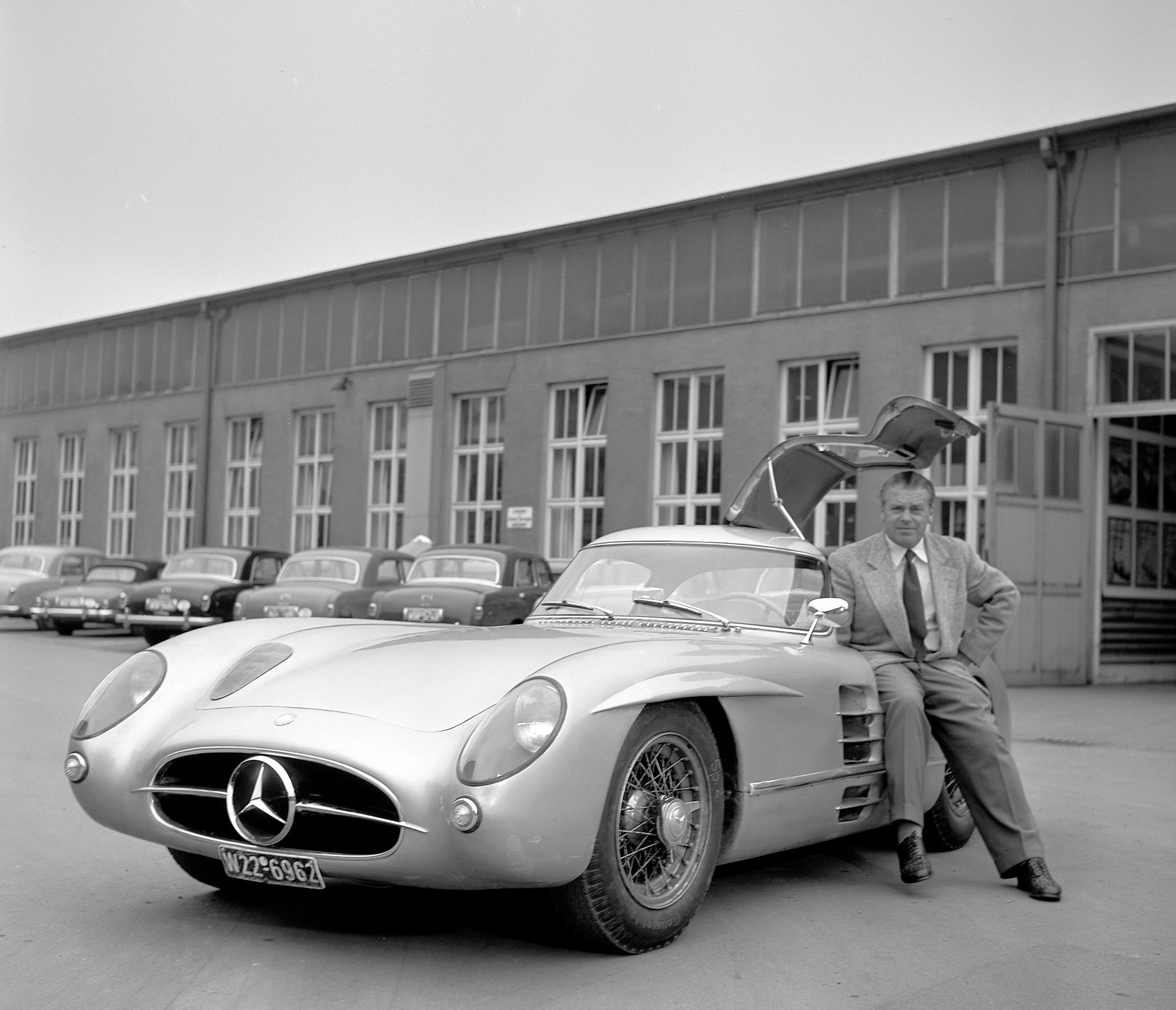
Like any good restaurant, we even have the dish.
The largest pull quote in this article is, in fact, from a 1957 Motor Trend review10 about the “Uhlenhaut Coupé” 300 SLR. It was from a road test written by Gordon Wilkins, and not related to the Mercedes-AMG ONE at all. Credit to Wilkins and team for the entertaining period review and instrumented data collection—itself not an easy feat.
Wilkins said of the car in period:
“With practice, the enormous power of the 300 SLR proves to be fully usable. On highways, 100 to 120 mph becomes cruising speed, and on ordinary roads the average speeds beat anything one had thought possible, without ever taking risks.
To drive such a car is to glimpse the qualities of the production models of the distant future. It points the way to vast improvements in controllability and safe handling that will make existing conceptions obsolete. Given a corresponding advance in road design, we are clearly a long way from the limits of performance that will be used in safety by future motorists.”
Comparing modern day power-to-weight ratio and performance, Uhlenhaut’s coupes wouldn’t keep up with a 2017 Chevrolet Camaro SS on sticky tires and a mild tune—a perfectly safe vehicle unless leaving Cars & Coffee, cold.
I can’t vouch for the 352 km/h (218 mph) Mercedes-AMG ONE’s handling prowess or safety record, but its composite racing-derived monocoque is admittedly a generational leap forward in strength from 99.9% of production vehicles on the road today.
Arguably, its safety tech is what should be fast-trickled down from conference room commitments, not its warp speed.
Even so, why the modesty?
Why doesn’t Ola Källenius more openly boast that his company is now producing a spectacularly capable land-locked jet for millionaire mavericks, capable of subsonically smearing its tubes of 285/35 ZR19 and 335/30 ZR20 lipstick all the way from Monza to Villa d'Este and back?
Because as tough as it may have been to build, test, and homologate, the latest lineage in a long-running lineup is by definition only Mercedes’ last.
• sources
- “New Mercedes-AMG One hypercar to be revealed this week”, Autocar (website)
- Withdrawal from motor sport, Mercedes-Benz Classic M@RS (website)
- “The races of 1955”, Mercedes-AMG F1 (website)
- “The races of 1955”, Mercedes-AMG F1 (website)
- “Mercedes-Benz Returns to Racing after 33-Year Absence”, Reuters (website)
- Mercedes-Benz Museum Full Coverage, Stuttgart - 🇩🇪 Germany - 4K Walking Tour”, Wanderlust Travel Videos (YouTube)
- Rudolf Uhlenhaut, the developer, Mercedes-Benz (website)
- THE MERCEDES-BENZ 300 SLR UHLENHAUT COUPÉ, RM Sotheby’s (website, YouTube)
- Rudolf Uhlenhaut, the developer, Mercedes-Benz (website)
- “1957 Mercedes-Benz 300 SLR First Test”, Motor Trend (website)
Additional sources
- The most valuable car in the world: Mercedes-Benz 300 SLR Uhlenhaut Coupé sold for an all-time record price of 135 million EUR to establish “Mercedes-Benz Fund” (press release)
- The new Mercedes-AMG ONE: Formula 1 technology for the road (press kit)




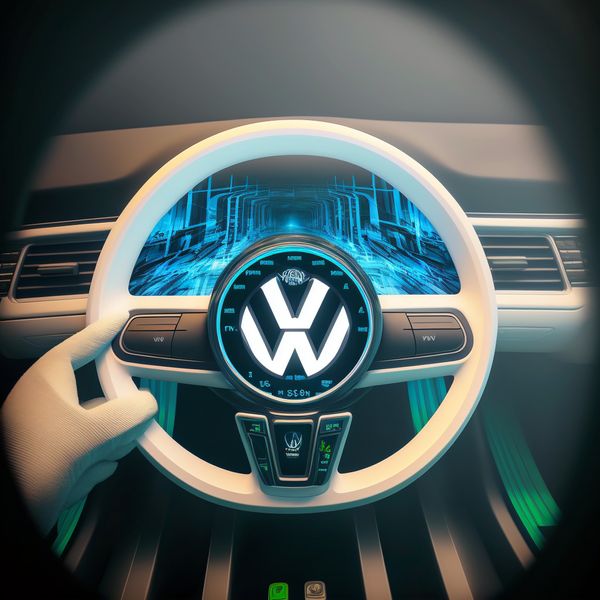




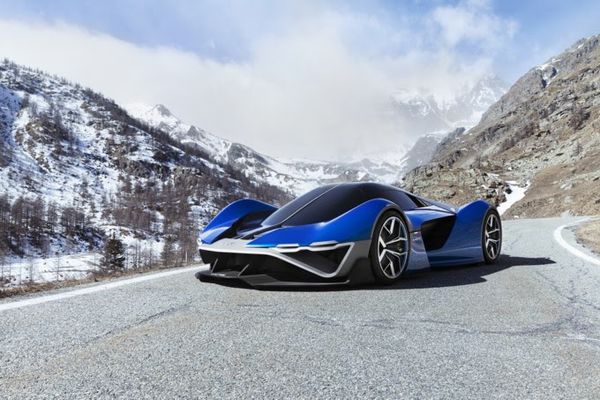
Member discussion